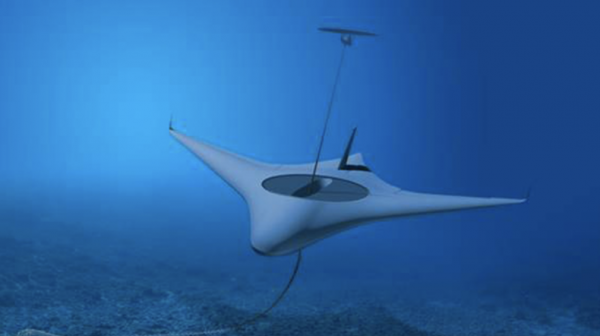North Carolina State University’s Mechanical and Aerospace Engineering Department was recently awarded approximately $700K as part of a multi-institution team that is developing high-efficiency unmanned underwater vehicle (UUV) technology that couples with marine hydrokinetic (MHK) energy-harvesting technology to enable long missions under high payloads. Sponsored by DARPA and led by Navatek LLC, the overall $5.5M project was awarded through a competitive bidding process after bids were solicited via an open Broad Agency Announcement in June 2019.
NC State’s efforts will center around the development of an undersea kite that harvests MHK resources when deployed from a UUV. Because of its high-lift design, the kite can harvest more than a conventional turbine through the use of controlled cross-current motion. NC State’s team, consisting of Lead Principal Investigator Chris Vermillion and Co-Principal Investigators Matthew Bryant, Kenneth Granlund, and Andre Mazzoleni, bring unparalleled expertise in the area of tethered systems for energy-harvesting. Their efforts will be complemented by the oceanographic observing expertise of Mike Muglia at East Carolina University’s Coastal Studies Institute. In fact, Vermillion has spent the past decade developing models and control systems for tethered energy-harvesting systems. Together with Co-PIs Granlund and Mazzoleni of NC State, and Muglia of ECU/CSI, he is in fact leading a recent $1.9M Department of Energy-funded effort that is focused on prototyping and tow testing a scaled ocean kite. These kite design and control efforts are complemented by the underwater vehicle design capabilities of Matthew Bryant, who led NC State’s efforts to prototype and demonstrate a cross-domain (air/water) vehicle through the DARPA-funded EagleRay XAV project. As Vermillion puts it, “The MAE department at NC State is quickly establishing itself as a powerhouse in the design, control, and deployment of underwater systems with energy-harvesting capability, particularly in the domain of tethered systems. This effort brings together these capabilities in a way that has the potential to transform the field of UUV design and operation.”
The NC State team will work with Navatek LLC in Honolulu, HI, who will lead the project and bring expertise in UUV design; the Applied Physics Laboratory at the University of Washington (APL-UW) in Seattle, WA, which brings expertise in UUV control; and Systems & Technology Research (STR) in Arlington, VA, which brings expertise in undersea operations, communications, and signal processing.
